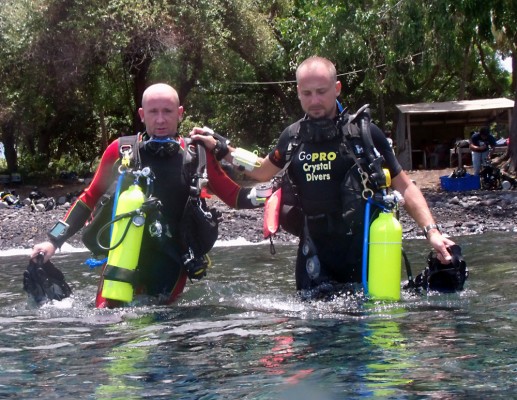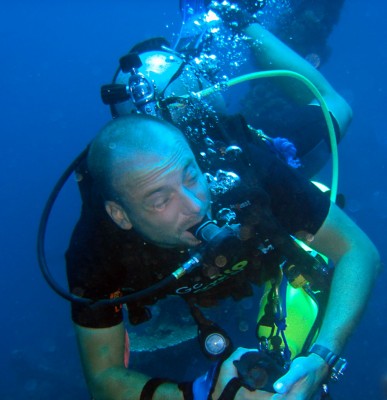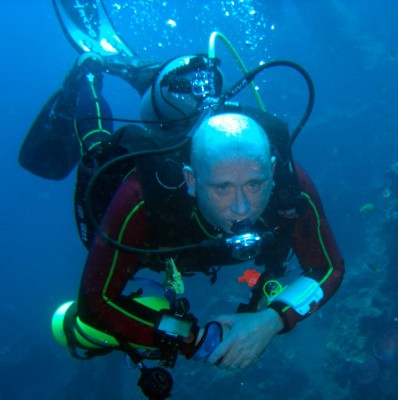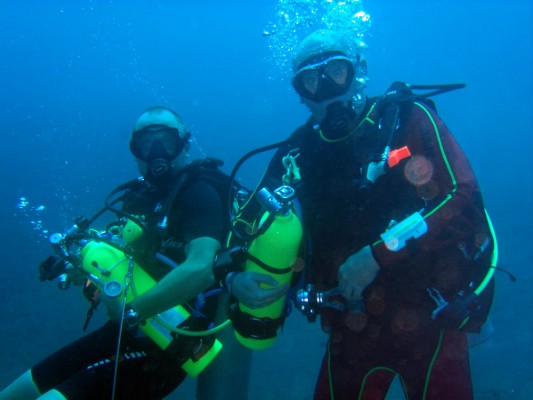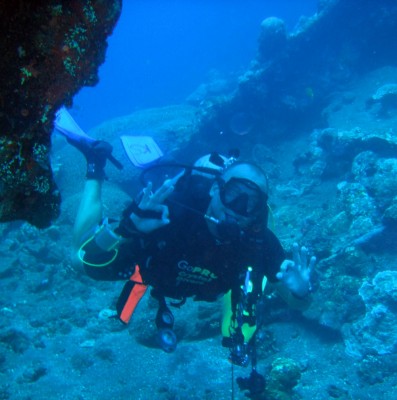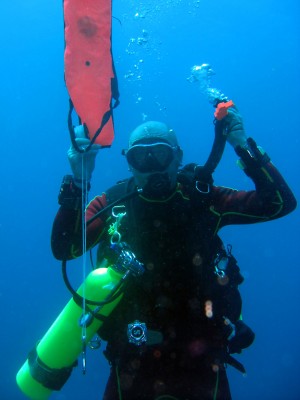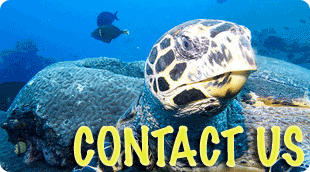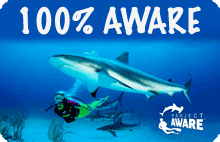The Self Reliant Diver
As part of my continuing education in diving, not just the gaining of experience, I decided that I would rather enjoy undertaking the Self Reliant Diver Course, a relatively new course from PADI. My aim being that once qualified, I could complete the necessary qualifying dives to undertake the instructor qualification.
First let me say that self reliant diving is not Solo Diving. The self reliant dive training provides you with another skill set that increases your ability for self rescue, identify and anticipate problems before they become life threatening and equip you with the skills to extract yourself from a situation should it arise.
Diving without a partner requires you to be willing to make the required commitment to train and equip yourselves properly and to accept the added risks involved. You must have the right attitude and ability to dive independently. This is true in other adventure sport activities such a solo rock climbing.
Diving without a partner requires the right attitude and equipment. This includes, but is not restricted to redundant air sources, specific dive planning and management of independent diving problems and emergencies. However, no amount of redundant equipment can effectively back-up a diver’s brain better than another individual
In simple terms, responsible independent scuba diving is not for everyone; however it does have a place. So, who should develop self –reliant diving skills and why? The course will appeal most to photographers, videographers, traveling divers, wreck divers and TecRec Divers. This is by no means an exhaustive list and will appeal to anyone with the necessary course pre-requisites.
Having completed the necessary pre diving study and knowledge reviews, we traveled to Tulamben on Monday 10th October to complete the three qualifying dives. Having gone through some very thorough pre-dive planning and briefing we kitted up ready for the first dive. We were certainly carrying much more equipment that normal; redundant equipment that is either critical for survival or critical to the dive objective’s success. This included a backup 4.7 ltr cylinder, complete with regulator and SPG. This would allow us the opportunity to initiate an emergency exit from a life-threatening situation without undue stress and with a minimum of confusion in the event of a major equipment malfunction.
During the first dive we were required to complete a number of skills, which were, with all standard and specialized equipment, conduct a buoyancy check at the surface, complete a 200m surface swim, demonstrate neutral buoyancy by hovering for one minute, perform a relaxed, nonstop 200 meter surface swim, demonstrate the ability to switch to a redundant air supply system, simulating a regulator free flow and breathe from the redundant air source for at least two minutes, perform a SAC rate swim by swimming for approximately five minutes at a level depth, recording the appropriate information for later calculation and deploy a lift bag or DSMB from the bottom. All skills were completed without issue and one skill that was practiced a great deal was switching to our alternate air source, which had to be done one handed and within thirty seconds.
After our required surface interval, we kitted up again for dive 2. During this dive we would have to complete further skills, comprising of demonstrating time, depth and gas supply awareness by writing the depth and cylinder pressure on a slate at 10-minute intervals, swim at depth for at least two minutes covering a distance of at least 18 meters without a mask. We would also have to whilst continuously swimming, simulate an out-of-air emergency and change from our primary air supply to our redundant air supply system within 30 seconds, then breathe from the redundant air supply system for at least two minutes, complete two navigation exercises, perform a SAC rate swim by swimming for five minutes at a level depth recording the appropriate information for later calculation and deploy a lift bag or DSMB from the bottom. Again, one of the key components and something practiced repeatedly throughout the dive was switching from our primary to redundant air supply. Again, all skills were completed and there was even time to interact with the aquatic life, especially the turtle that seams to have taken up residency on the wreck.
After lunch, we began our third and final qualifying dive. For this dive we were truly diving alone but it was not just a fun dive. The instructor gave us our briefing for the dive and set us our tasks. This was to demonstrate time, depth and gas supply awareness by writing the depth and time on a slate for each 20 bar of gas consumed, demonstrate turn around pressure and time limit awareness when either the pressure or time limit established during the briefing is reached by writing the time (if pressure limit reached first) or the pressure (if time limit reached first) on a slate, demonstrate navigational control and return to the exit with no assistance from the instructor and while continuously swimming, simulate an out-of-air emergency and change from your primary air supply to your redundant air supply system within 30 seconds At the conclusion of the dive we then had to deploy a lift bag or DSMB and ascend to the surface, stopping at 5 metres/15 feet for a three minute safety stop and most importantly surface from the dive within the established time frame and with no less than the planned pressure remaining in the cylinder.
The third dive was a new experience, diving alone and with no buddy. We have all no doubt at some time or other been alone for a short while but to do a whole dive alone was something new. What was noticeable during this dive was that you checked your dive computer more often than usual and you became more aware of your surroundings and where other divers were, just in case.
At the end of the third dive we had completed all the skill requirements and were now qualified as Self Reliant Divers. Twenty more self reliant dives and instructor qualification beckons. The benefits of completing this course are not about diving alone. It is about being self reliant, equipping you with the skills and knowledge to be a better diver, able to self rescue if the need ever arose. These are certainly skills that anyone should have and teaches you how to manage situations where you may be separated from your buddy for extended periods of time.
If you want to do the Self Reliant Course, then there is no better place than Crystal Divers. Take a look at the Courses Section and see what is entailed.
DDD








